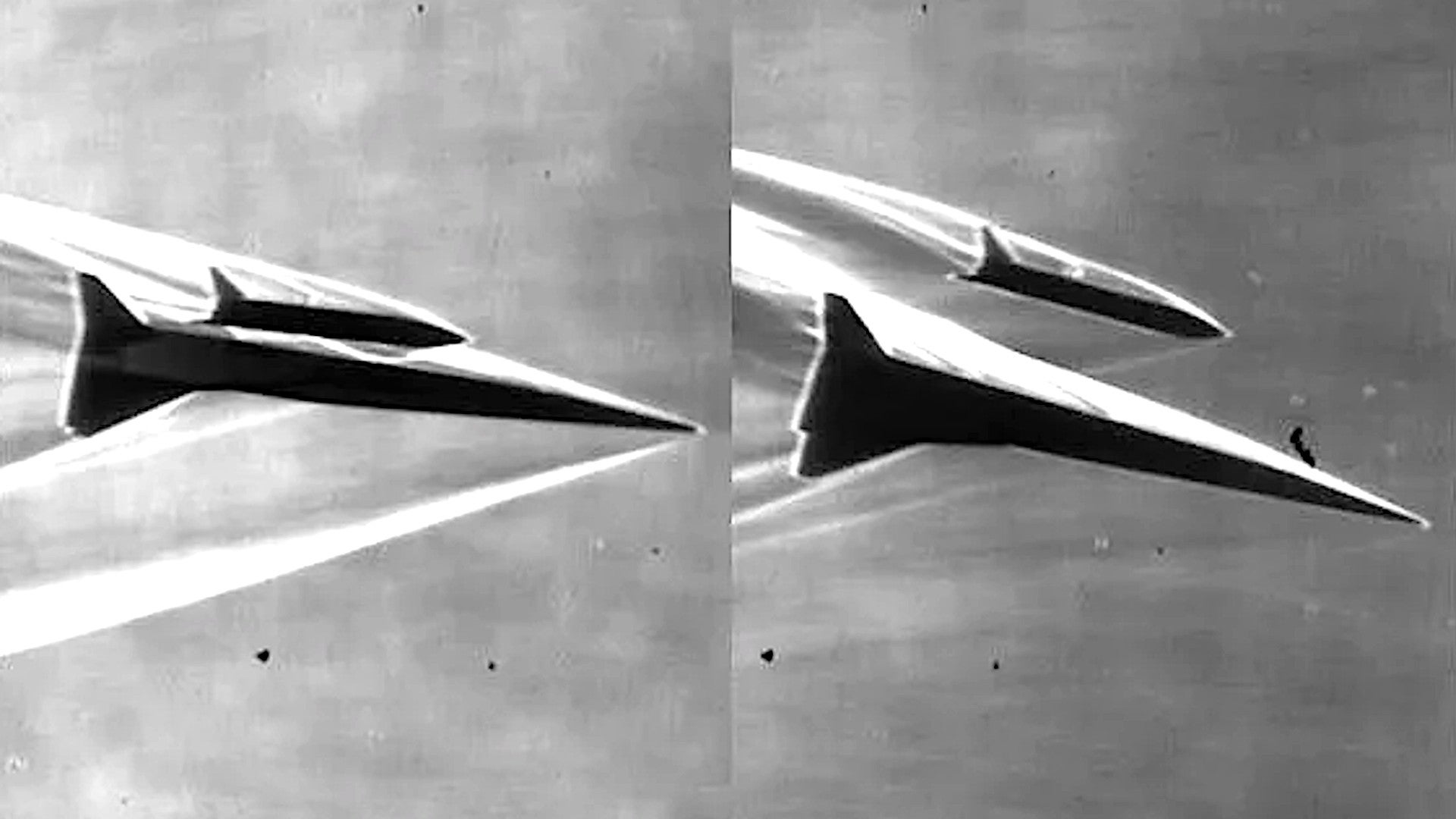The China Academy of Aerospace Aerodynamics, or CAAA, has released pictures and a brief video showing a wind tunnel test of a model of a two-stage-to-orbit space launch system involving a fast- and high-flying mothership aircraft that carries a reusable spacecraft on top of its fuselage. Though this general concept has been around for decades, there has been a major resurgence of interest in it around the world in recent years amid growing demand for flexible, rapid, and unpredictable space launch options.
CAAA released the imagery, together with relatively general details about the project via its official WeChat social media account on Oct. 21, 2019. Aerodynamic testing and modeling using various wind tunnels and other equipment are among the primary services this research and development center offers. CAAA is also part of the larger state-owned China Aerospace Science and Technology Corporation, or CASC.
The statement from CAAA said that the tests had been successful, but offered no details on how far along this two-stage-to-orbit program might. As the researchers noted, safe separation of the spacecraft from the mothership is absolutely essential to making this concept work.
The general principle behind two-stage-to-orbit systems is that a mothership carries a spacecraft to a very high altitude, as high as between 80,000 to 100,000 feet in some past proposals. The spacecraft then uses its own rocket motor to boost itself into orbit.
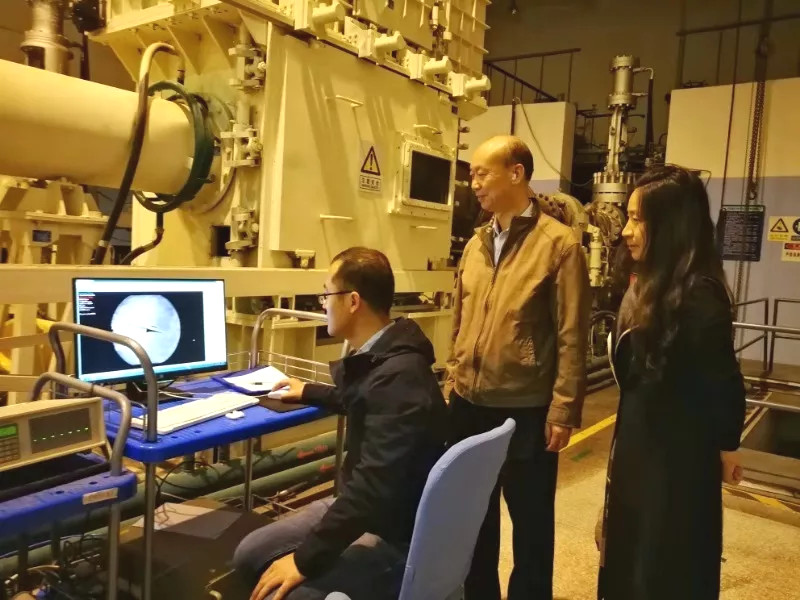
Over the years, there have been a wide range of proposed concepts in this vein that differ primarily in how capable the combination of mothership and spacecraft is and, as a result, how big a payload the second vehicle can carry into space and what types of orbit it can achieve. The War Zone has been closely following these developments.
Some of these proposals have involved the idea of a mothership that is already flying at high supersonic or even hypersonic speed to give the smaller vehicle an extra boost. The complete concept that CAAA showed along the wind tunnel test imagery is typical of many of these concepts and a 3D rendering shows a high-speed, delta-winged, dart-shaped mothership, which would reportedly use scramjet propulsion. This choice of engine, combined with the vertical wingtip stabilizers, similar to those found on the Cold War-era North American XB-70 Valkyrie supersonic bomber, point to a design that rides its own shockwaves at high speeds.
The spacecraft also appears to have a general planform that is roughly analogous to other mini-space shuttle designs that have emerged over the years, such as NASA’s X-34A or U.S. Air Force’s more secretive X-37B.
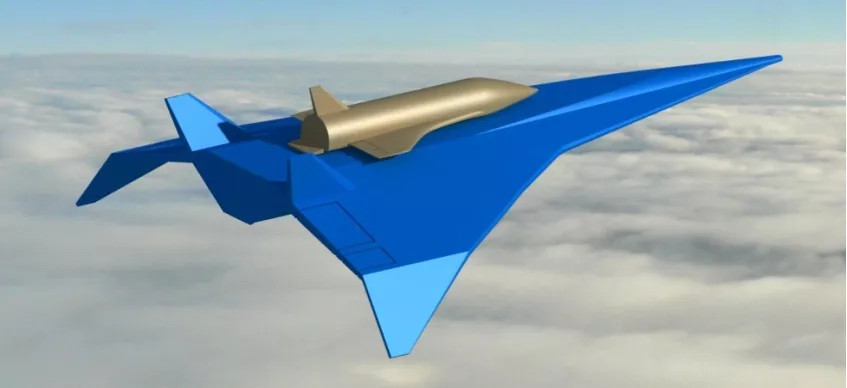
CAAA did not offer any frame of reference for how large the designers expect the mothership or the spacecraft to be in their final forms. However, there are certain similarities between the spacecraft wind tunnel model and unconfirmed images purporting to be the Shenlong, or Divine Dragon, an air-launched, reusable spaceplane that China has reportedly been developing since at least 2000.
China reportedly conducted drop tests of a Shenlong test article in 2007 and suborbital flight of a prototype in 2011. Pictures have shown what may be the Shenlong underneath the fuselage of a Xian H-6 bomber.
CAAA’s website also has a very small graphic showing a spaceplane or lifting body concept similar in general shape to the U.S. Air Force’s Cold War-era X-20 Dyna-Soar or the Russian Cosmopolis XXI, or C-21. However, this looks unrelated to the two-stage-to-orbit design from the wind tunnel tests.

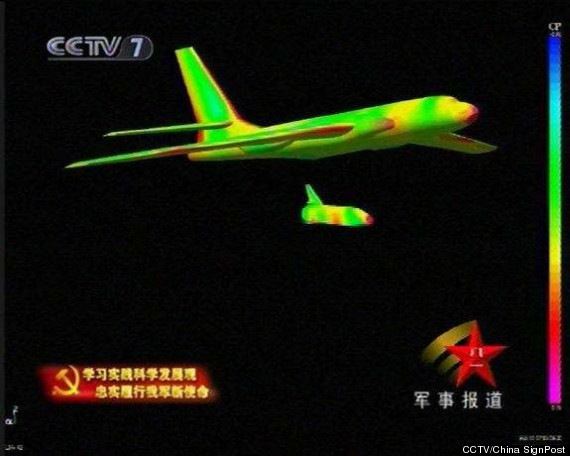
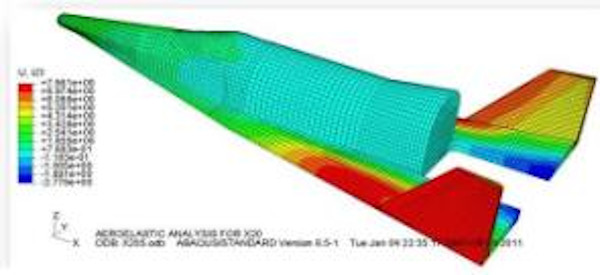
Experts have previously estimated that the Shenlong would be just about 18 feet long, which would make it a very small design similar in many respects to a spacecraft that Russia’s International Scientific Optical Network (ISON) is developing as part of its own two-stage-to-launch concept. If the model CAAA tested is at all related to the Shenlong, the mothership appears to be around two and half times as long, or around 45 feet, and have a substantially greater wingspan as its top-mounted payload.
Its small size may also mean that it has relatively limited payload and orbital capabilities. At the same time, the final product could be much larger and more capable. In fact, this is likely the case.
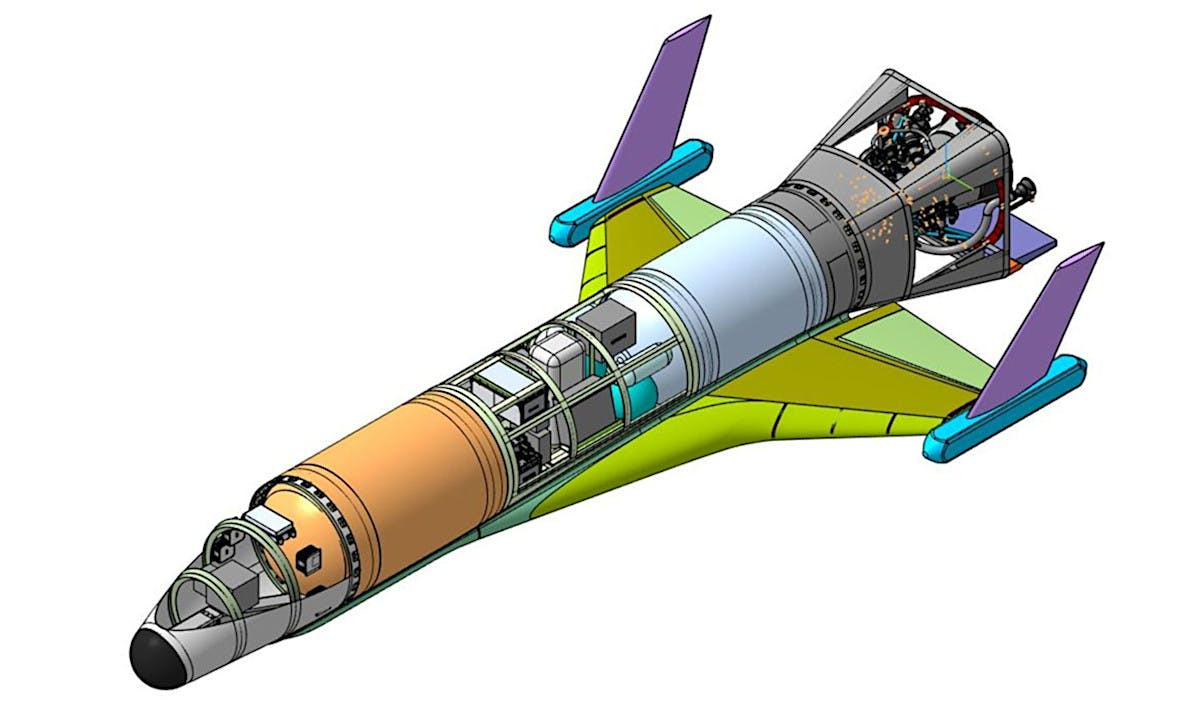
Whatever the exact specifics of the mothership and spacecraft designs that CAAA recently tested, it’s hardly surprising that China would be interested in this general concept. The Chinese government is pushing ahead hard to become a major space power. Two-stage-to-orbit concepts offer added flexibility in launching smaller satellites and other spacecraft, as well as the ability to potential to do it faster and at a lower cost, as the War Zone
has explored in-depth in the past.
The motherships used for air-launched space vehicles can reposition to more optimal launch locations and do not generally require the same kind of extensive, fixed infrastructure associated with traditional space launch rockets. This could also make the launches less predictable and harder to monitor or counter. This kind of responsive launch capability could also be valuable for rapidly replacing satellites and other space-based capabilities that may get disabled or destroyed in a future conflict.
There are already strong indications that China has been pursuing simpler aerial space launch capabilities for these very reasons. In 2016, the Aviation Industry Corporation of China (AVIC) reached a deal with Antonov in Ukraine to finish the construction of a second An-225 Mriya and potentially produce more under license in China.
The Soviet Union only ever built one of these planes, one of the largest aircraft ever built, which now belongs to Ukraine’s Antonov Airlines. Originally intended to carry spacecraft parts, as well as Buran space shuttle, the An-225 would be an ideal aerial launch platform for space vehicles, as you can read about in more depth in this past War Zone piece.
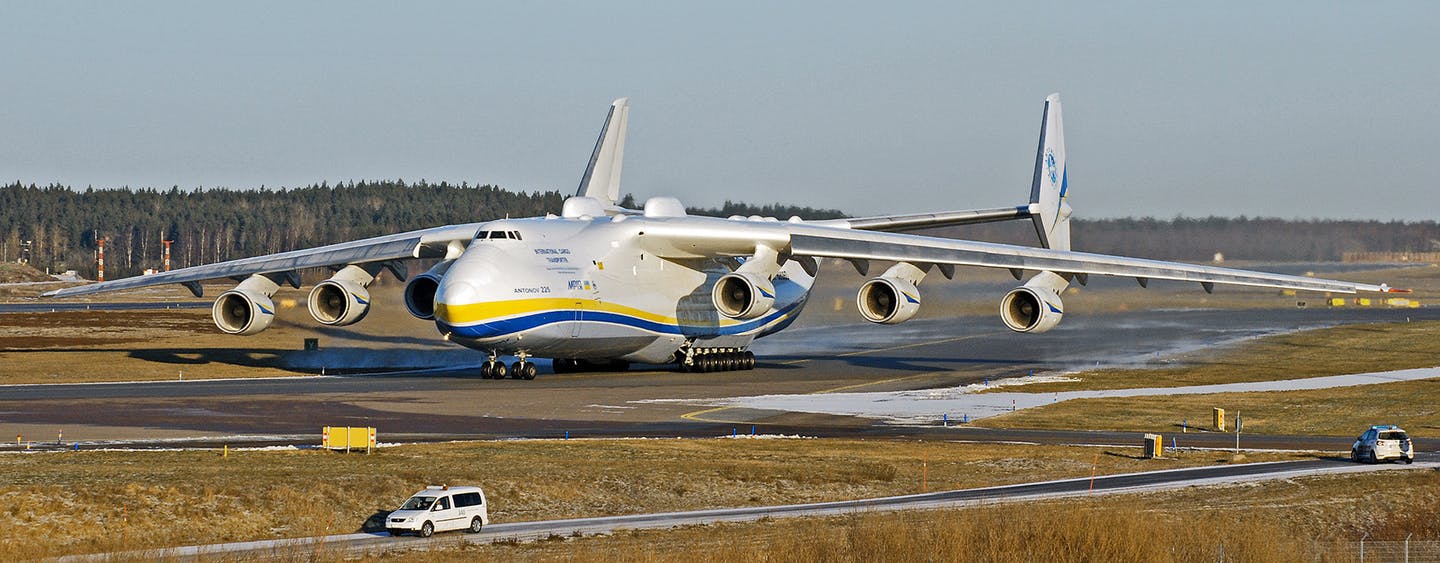
Work on a second An-225 had come to an end in 1994, but the partially built Mriya remained in storage. As of June 2019, the project appeared to have stalled and the aircraft remains incomplete. In September 2018, Antonov had said it would need hundreds of millions of dollars in additional funds to complete the project. There have been no reports of any progress on licensed production of additional aircraft.
Still, even if the final example of the dedicated two-stage-to-orbit system that CAAA has been helping to test is not capable of putting objects into a stable orbit, it could still be valuable for research and development of more robust follow-on designs. It could also have practical applications, such as conducting short-duration orbital or suborbital intelligence-gathering missions on short notice. This is another general area that China clearly has an interest in.
At the military parade in Beijing to mark the 70th anniversary of the founding of the Communist state on Oct. 1, 2019, the People’s Liberation Army displayed a rocket-powered high-speed unmanned aircraft, known variously as the WZ-8 or DR-8, another short-notice, short-duration intelligence-gathering platform, albeit one that does not go into space. It is very likely that this system is also air-launched, using a new version of the H-6 bomber, the H-6N. This aircraft is specifically designed to air-launch oversized payloads.
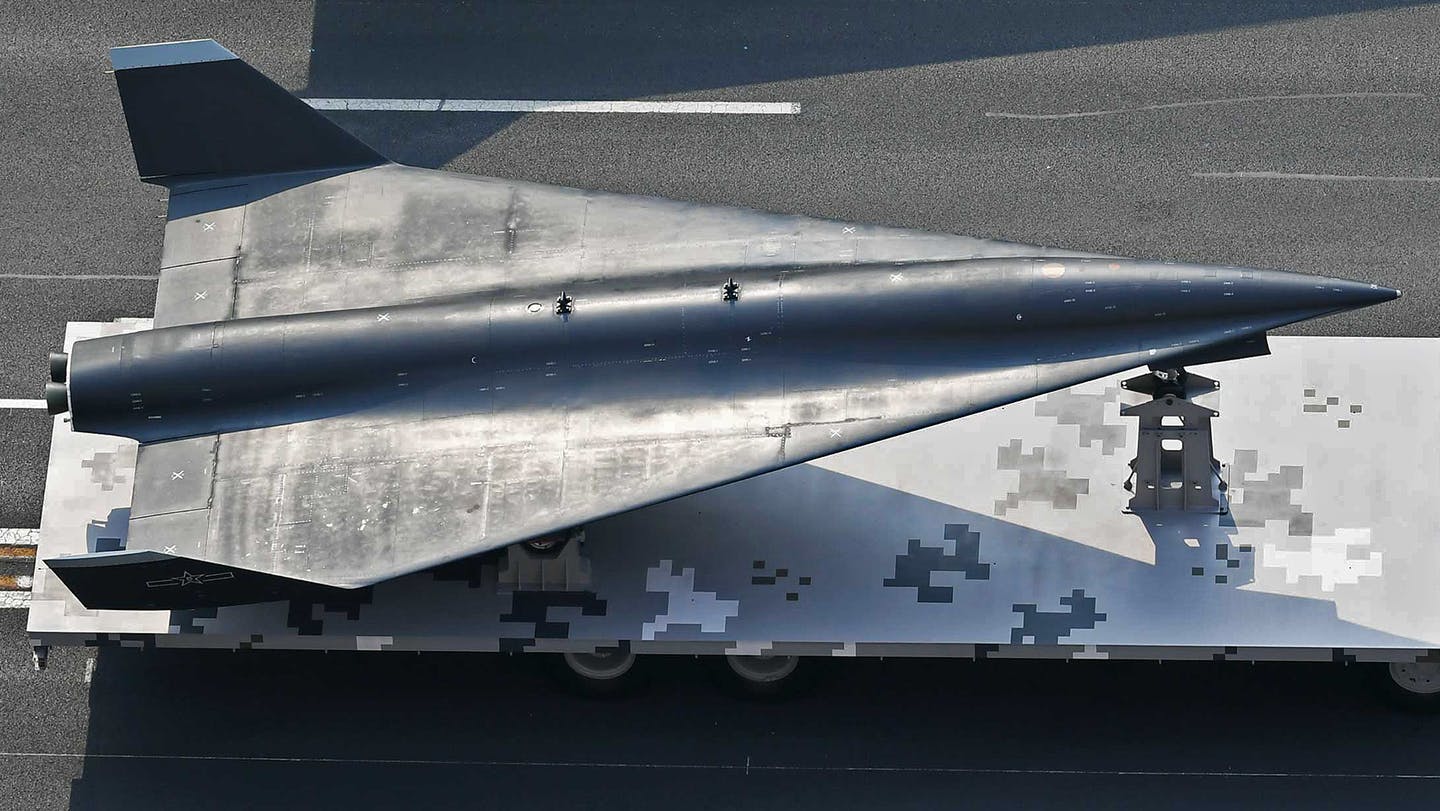
The design seen in the recent CAAA wind tunnel tests may also be capable of functioning as an anti-satellite weapon by carrying a payload to blind, jam, or otherwise disable or destroy target objects in space. The Chinese, as well as the Russians and others, have already been developing increasingly capable anti-satellite systems. These efforts stem from a desire to challenge other countries that have typically had an edge in space-based capabilities, chiefly the United States.
There are commercial applications for the two-stage-to-orbit concept, as well. A number of private companies, including Virgin Orbit and the recently sold Stratolaunch, which the late Microsoft co-founder Paul Allen had originally founded, are looking to offer lower-tier aerial space launch capabilities using expendable vehicles. Another private venture, Virgin Galactic, aims to use reusable spaceplanes for space tourism.
Stratolaunch had notably hired Scaled Composites to develop and build the unique and massive Roc, now the world’s largest airplane, which flew for the first time in April, to act as a mothership. The company had also planned to build a reusable spacecraft, called Black Ice, a project the firm canceled before the sale and that now has an uncertain future.

All told, whether or not the wind tunnel models that CAAA tested are in support of the active development of a two-stage-to-launch capability, or are simply a stepping stone toward such a program, it seems clear that China has an interest in aerial space launch concepts as the country continues to become an increasingly important player outside the Earth’s atmosphere.
Contact the author: joe@thedrive.com
